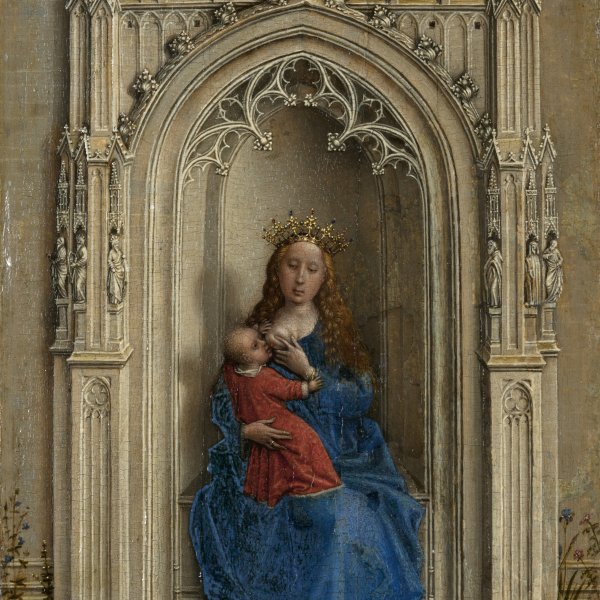Rogier van der Weyden
Together with Jan van Eyck, Rogier van der Weyden is the most important 15th-century Netherlandish painter. The first and most outstanding of a family of painters, his son Pieter and nephew Goswijn worked in his studio. Van der Weyden did not sign his works but his career has been reconstructed on the basis of stylistic similarities evident in a group of documented works by his hand. He trained at a relatively late age with Robert Campin, in whose workshop he is documented in 1427, becoming a master in 1432. In 1435 Van der Weyden moved to Brussels where he was appointed official painter to the city and executed one of his first known commissions, to paint four symbolic panels on The Justice of Trajan and Herkenbald (now lost) for the decoration of a room in the Town Hall. Other early works include The Virgin and Child (Kunsthistorisches Museum, Vienna), The Visitation (Leipzig Museum der Bildenden Kunste), and The Virgin and Child (Museo Thyssen-Bornemisza, Madrid). Unlike Van Eyck, Van der Weyden did not receive a salary from the Duke of Burgundy but he executed numerous works for this patron and for other rulers of the day. The only journey by the artist mentioned in literary sources was a trip to Rome in 1450, to where he travelled as a pilgrim during Holy Year.
Van der Weyden’s ability to express human emotions such as suffering and sadness, the highly expressive faces of his figures and his exquisite technique can be considered his principal contributions to 15th-century Flemish art. Celebrated during his own lifetime, Van der Weyden’s work was widely known, partly through the copies made by his active workshop. Among his most remarkable and impressive paintings are The Descent from the Cross (Museo del Prado, Madrid), with its gold background; The Miraflores Triptych (Gemäldegalerie, Berlin), commissioned by Juan II of Castile; The Columba Triptych (Alte Pinakothek, Munich), with its marvellous depiction of The Adoration of the Magi in the central panel; and The Crucifixion (monastery of El Escorial, Madrid). A number of outstanding portraits by Van der Weyden have survived, including Portrait of a Woman in the National Gallery of Art, Washington. The artist was buried in the church of Saint Gudule in Brussels.





